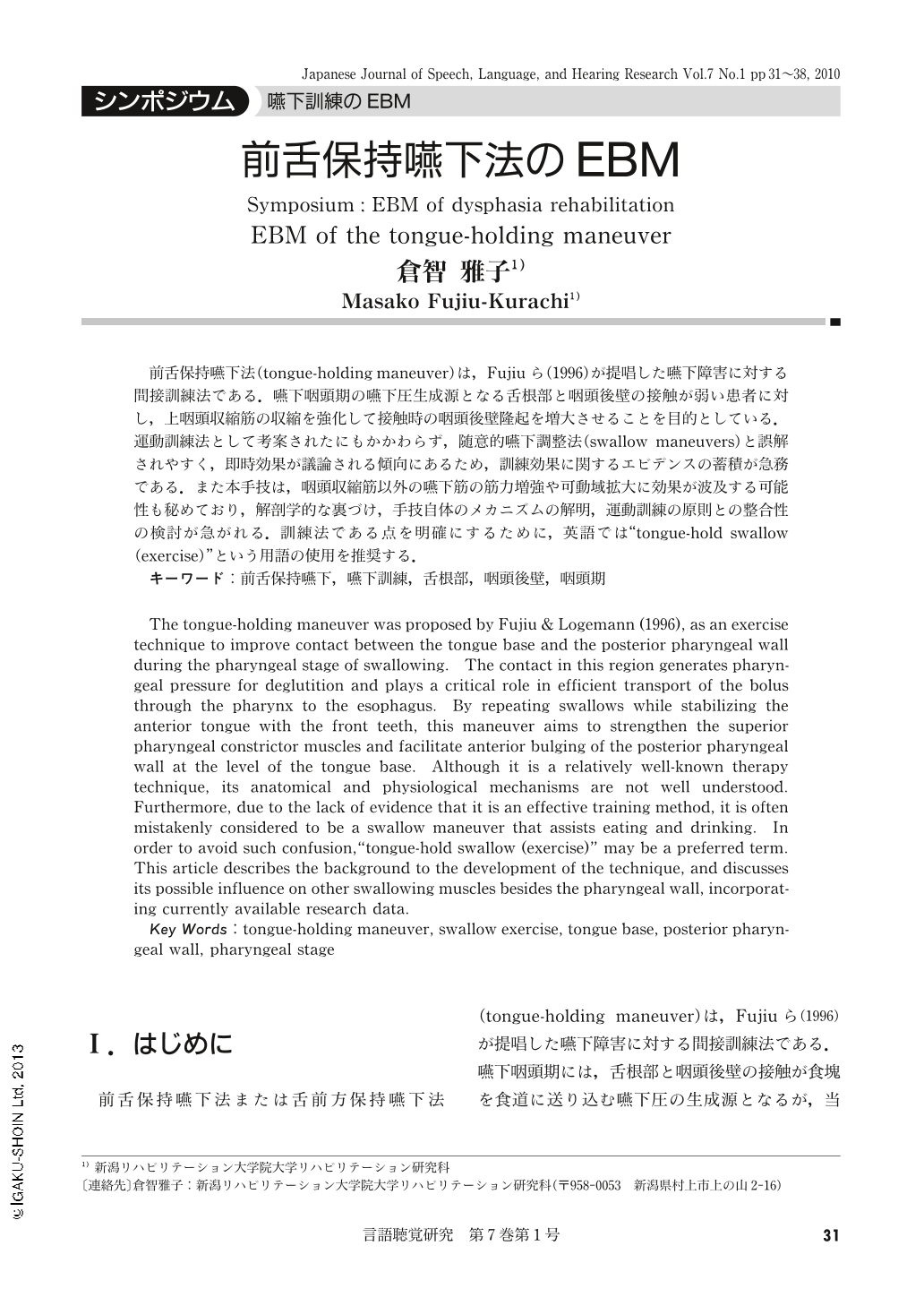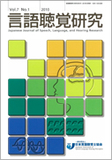Japanese
English
- 有料閲覧
- Abstract 文献概要
- 1ページ目 Look Inside
- 参考文献 Reference
- サイト内被引用 Cited by
前舌保持嚥下法(tongue-holding maneuver)は,Fujiuら(1996)が提唱した嚥下障害に対する間接訓練法である.嚥下咽頭期の嚥下圧生成源となる舌根部と咽頭後壁の接触が弱い患者に対し,上咽頭収縮筋の収縮を強化して接触時の咽頭後壁隆起を増大させることを目的としている.運動訓練法として考案されたにもかかわらず,随意的嚥下調整法(swallow maneuvers)と誤解されやすく,即時効果が議論される傾向にあるため,訓練効果に関するエビデンスの蓄積が急務である.また本手技は,咽頭収縮筋以外の嚥下筋の筋力増強や可動域拡大に効果が波及する可能性も秘めており,解剖学的な裏づけ,手技自体のメカニズムの解明,運動訓練の原則との整合性の検討が急がれる.訓練法である点を明確にするために,英語では“tongue-hold swallow(exercise)”という用語の使用を推奨する.
The tongue-holding maneuver was proposed by Fujiu & Logemann (1996), as an exercise technique to improve contact between the tongue base and the posterior pharyngeal wall during the pharyngeal stage of swallowing. The contact in this region generates pharyngeal pressure for deglutition and plays a critical role in efficient transport of the bolus through the pharynx to the esophagus. By repeating swallows while stabilizing the anterior tongue with the front teeth, this maneuver aims to strengthen the superior pharyngeal constrictor muscles and facilitate anterior bulging of the posterior pharyngeal wall at the level of the tongue base. Although it is a relatively well-known therapy technique, its anatomical and physiological mechanisms are not well understood. Furthermore, due to the lack of evidence that it is an effective training method, it is often mistakenly considered to be a swallow maneuver that assists eating and drinking. In order to avoid such confusion,"tongue-hold swallow (exercise)" may be a preferred term. This article describes the background to the development of the technique, and discusses its possible influence on other swallowing muscles besides the pharyngeal wall, incorporating currently available research data.

Copyright © 2010, Japanese Association of Speech-Language-Hearing Therapists. All rights reserved.


